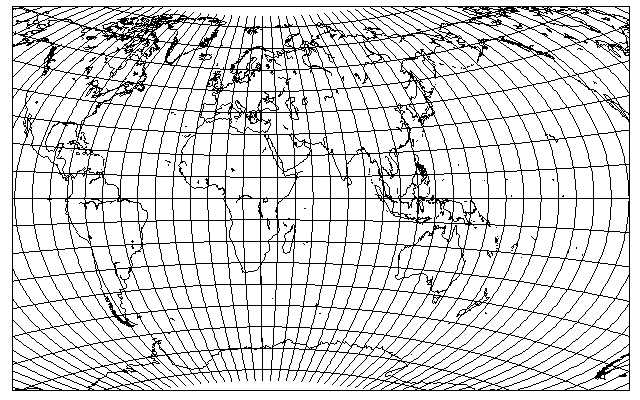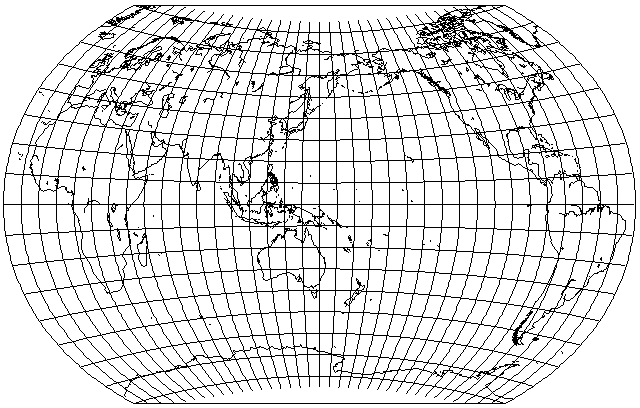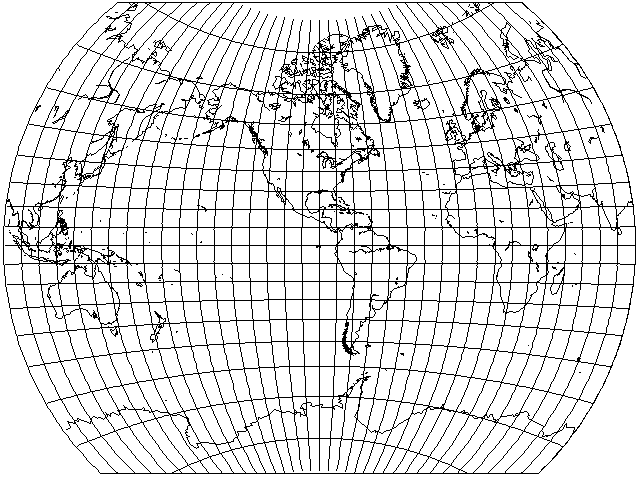RogerOwens wrote:Someone suggested the comparison to a reference-projection, by which a projection's error of whatever kind would be expressed in terms of its value for the reference-projection.
I don’t know who “someone” is
The article said that it was Laskowski, writing in 1998.
or what value a “reference projection” would be.
The proper reference projection is the globe.
Sure, but they were just talking about how compare different kinds of departures from the globe, when those measures are in different units.
I didn't mean to advocate that. What occurs to me would be to estimate the range of each distortion's variation among the popular projections, and label it as a range of 0 to 1. So all the distortions would be indicates by that 0 to 1 rating.
...or, better yet, if a person could just subjectively estimate how much each kind of distortion seems to make it difficult for him to identity or find a place on the map, then he could subjectively weight the distortions in that regard. I don't know if a person can make that judgment though.
But, if equal-area projections need only be compared by angular-distortion, and that amounts to the same thing as an aggregation of the maximum scale-variation at each point, then there'd be no need for comparing different kinds of distortion. ...except that I'd want to include map area divided by the square of equator-length as a merit-measure for equal-area maps. ...and I guess I'd compare those two merit-measures by a 0 to 1 scale representing their their max variation among the popular projections.
Finding and identifying positions on the map is what seems important to me. If the map is cylindroid, and you have a
latitude-ruler, then it will be easy to find or identify positions on the map. But maps that have more angular-distorition, or are smaller, make it more difficult to judge positions accurately without ruler-measurement, and that's what I'd rate equal-area projections by.
...because one of the most important uses of equal-area is thematic maps, on which it's often necessary to judge position.
I used to prize linearity, for position determination, but a latitude-ruler allows positions to be determined on any cylindroid map. A latitude-ruler would be marked to indicate, for any y-value on the map: 1) Latitude; 2)Area-error-factor (for maps that aren't equal-area); and 3)East-West scale. It would also have a scale marked to indicate Longitude for any x-value on the map.
If the map is cylindrical, then the latitude-ruler could also have a scale marked to indicate the North-South scale for any y-value on the map. ...or maybe just the NS/EW scale disproportion. That's an advantage that a cylindrical has over a pseudocylindrical--the possibility of showing that with a latitude-ruler.
Of course both sides of the ruler would be needed, to have all those scales.
There is no difference between your two measures.
That's a good thing.
I was suspecting that, even when posting my message. I should have known it, because a conformal projection, by equalizing the scale in all directions at every point, gets rid of angular errors and give accurate small shapes.
So, for an equal-area map, would one just aggregate the maximum scale-variation at lots of points? Would that be the measure of shape-accuracy?
I don't know--It seems to me that the departure from perpendicularity where graticule-lines meet is an especially important angular-error. The graticule-lines seem special, because they're what a person uses when trying to identify or find a lat/lon point on the map.
The problem, as I pose it, is independent of human biases such as a desire for perpendicular graticule elements. Such a criterion has nothing to do with how abused by the projection the underlying terrain is.
Yes, I was beginning to doubt what I'd said as soon as I posted it. Arguably the angular-error measured between the graticule-lines at their intersection is the
least deceptive angular error, because the graticule-lines make it visible and obvious.
The other matter is about how, for a particular kind of error, the errors at the various points looked at are aggregated.
This is entirely what it is about.
Ok--Is that because equal-area maps' shape-accuracy can be measured by just finding and aggregating the maximum variation of scale in different directions at each point looked at?
So, if one is only interested in shape-accuracy, there's only one distortion-measure to look at, and so there's no need to weight distortion measures?
Michael Ossipoff


